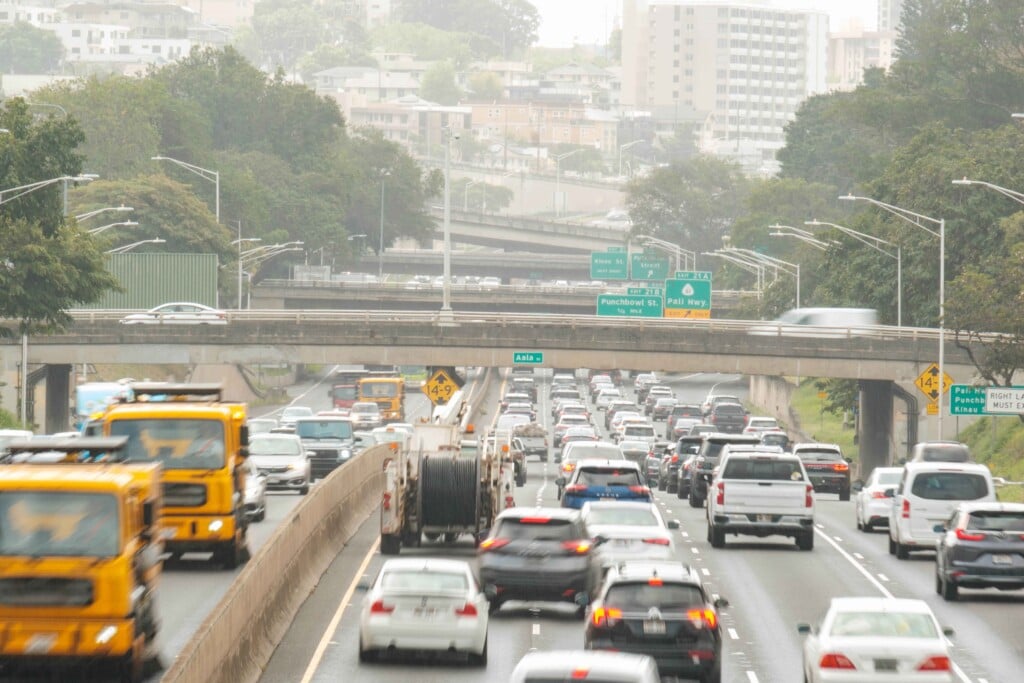Behind the Design of Our Cover Story on Private Equity Landlords
The goal was to create imagery that reflects the lived experiences of renters.

The cover story of our January/February 2023 issue, “What Happens When Private Equiity is Your Landlord in Hawai‘i,” focuses on the impacts that private equity landlords have had on local renters.
The story opens with an illustration of a corporate landlord in a navy suit and Hawai‘i-themed tie. Later illustrations include an electric meter nestled behind palm leaves and homes turned into piggy banks.
Writer and Engagement Editor Noelle Fujii-Oride asked Creative Director Kelsey Ige to explain her design process for this story.
What was your inspiration behind the design for this story?
Writer Noelle Fujii-Oride and I discussed focusing on the human experience of living under a private equity landlord and a few thoughts and feelings came to mind based on her interviews with current and former tenants: “the landlord isn’t from here (Hawai‘i),” “costs are often hidden and I don’t know what or why I’m paying for extra fees,” “I feel as though my new landlord just wants to squeeze every penny out of me regardless of the quality of my residence.” I wanted to create imagery that would evoke some humor and relatability but also reflect the lived experiences of some of the folks interviewed.
Can you walk us through your process of how you created this design? For example, did your original concept change at all? What was most challenging about this design?
The concept didn’t change drastically in the process – magazine publishing is so quick that we need to work fast to develop the design and images for a story. Though, I did need to rethink the tone because I didn’t want to villainize or victimize anyone – it’s a fine line to walk when developing imagery for a story like this. But I did want to have some sense of surrealness in the images because some of the problems reported by tenants are unbelievable (but real). Rats running through rooms, unfinished patched holes, how is someone be expected to live like that when paying over $3,000 for rent?
The most challenging part of designing this story was not being able to photograph the actual people – the tenants and the landlords. I decided to use illustrations instead because most of the tenants requested anonymity. We always want to treat our interviewees with respect and dignity.
How does this design align with Hawaii Business Magazine’s design principles?
One of our design principles is to design with intention. My intention with this package was to balance the good and not so good with care in a way that effectively guides the reader through the story. If the images are too jarring, it could take away from the substance of Noelle’s writing.
Another key design principle at Hawaii Business is to implement semiotics (the study of signs/images and their use/interpretations). Practicing semiotics in a complicated story like this adds different levels of meaning – helping the reader imagine what a tenant’s experience is like, or even what a landlord’s experience is like. And most importantly, it’s focusing on the lived experiences of people in Hawai‘i, as opposed to anywhere on the continental United States.
What do you want readers to take away from the design?
Mostly, I’d like readers to be informed on the very real experience of the tenants and the challenges local families face with housing in Hawai‘i. The cost of living in Hawai‘i is among the highest in the country and many face moving away from the islands for more affordable living. Personally, I would be devastated if I had to leave Hawai‘i to live elsewhere. I hope this story package – the excellent investigative reporting and the imagery together – help our readers have empathy for the many local people in situations like this. Our readers have the power to help shift the situation and hopefully more local families can stay and thrive.









